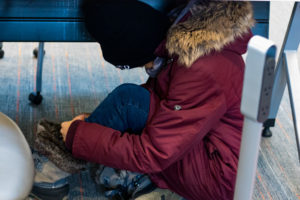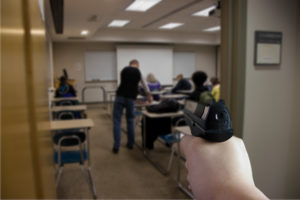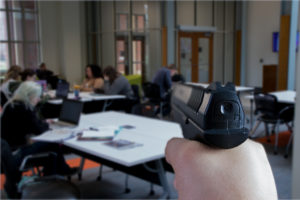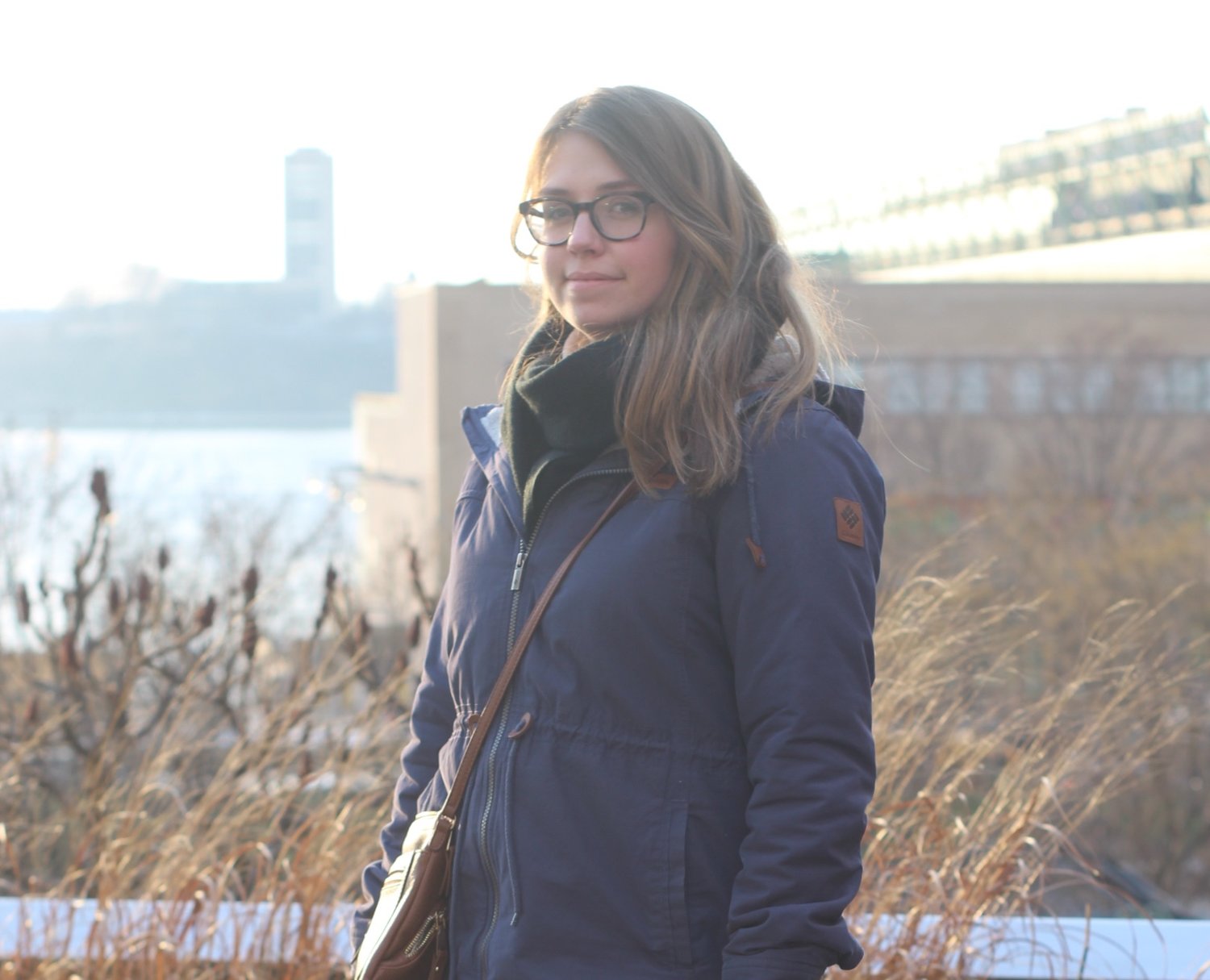Last month’s shooting in Florida has yet again brought up the concern for safety at schools, and universities like our own are not exempt from this conversation.
How safe would Capital’s campus be in the event of an active shooter?
Capital is generally a safe campus; you need an ID to get into residence halls and other buildings late at night, and there are cameras all over campus. Students seem to feel safe on campus: 41.6 percent of students said in a survey conducted by The Chimes that they definitely feel safe on campus, 59 percent said that they feel mostly safe and only about 8 percent said they do not or mostly do not feel safe on campus. But it’s important to note that nothing to the scale of an active shooter situation has occurred here.
Campus safety is enhanced by the presence of our own police force within public safety, and we’re not far from Bexley and Franklin County police. This lowers the response time and can limit the amount of damage a shooter can do.
Newly hired faculty and staff have orientation, where they learn the basics of what to do during an active shooter, but public safety chief Frank Fernandez said this would be enhanced through the use of drills.
A recent motion by the religion department about classroom doors shows that Capital still has some room for improvement.
“The motion was prompted by our observation that many classrooms on campus do not have doors that easily, if at all, lock from the inside,” Sally Stamper, professor of religion, said.
This could definitely be an issue in the event of an active shooter, as faculty and staff are asked to lock doors as part of the safety protocol for an active shooter.
Despite this observation, Stamper did say that Capital is “generally as safe and secure as any campus on which I’ve taught.”
Fernandez said the safety of classrooms depends on who is in the classroom and the kind of training that they have had.
“If you have the right training, all the classrooms could be as safe as you want to make them,” Fernandez said. “You cannot rely on devices to make that classroom safe. I want you to … delay the bad guy, escape from there, whatever it takes. If you stay [in the classroom], you become a target.”

What to do if an active shooter situation arises
Active shooters rely on time.
As Fernandez said, “The active shooter doesn’t plan for after the police get there,” and, depending on the distance between the scene and the emergency response team, it can take several minutes for police to arrive and neutralize the threat.
At Capital, we can have police on the scene in about five minutes, and it takes even less time for public safety to arrive — one to three minutes for main campus and about five minutes for the law school.
“I won’t say that [an active shooter] isn’t going to happen here, but I will say we will have more resources immediately than other universities,” Fernandez said.
But, even in only a few minutes, a shooter can kill several people. So what can civilians do to protect themselves?
Fernandez says the first thing you should do is not hesitate. If you hear anything resembling the sound of gunshots, run away from the threat in a zig-zagging motion and don’t congregate in groups.
If the threat is nearby and running isn’t possible, those involved should barricade themselves in a safe place and have a plan for escape if needed. Pushing furniture in front of the entrance to a safe area can keep the threat from getting in and causing more casualties.
The last resort for those involved in an active shooting is to fight by trying to disarm the threat.
In the event that the shooter becomes disarmed, never grab the gun, as the police will assume that you are the threat. Fernandez says you should instead put the gun inside a trashcan and make it known that the gun is there.

A gun-free zone
One big conversation in communities is the idea of gun-free zones causing schools to be seen as targets. It’s no secret that Capital University, like all schools, is a gun-free zone, but that doesn’t mean the university is completely free of guns.
Fernandez said that even though the university mandates the property a gun-free zone, there have been a few instances of people being caught with weapons on campus. The most recent incident was last year. A records request has been submitted to get more information on this incident, and this story will be updated once the information is obtained.
Fernandez said that although these incidents don’t happen often, he knows that people bring weapons to campus without public safety ever knowing about it.
“I’m not going to say that it’s not often that people bring weapons to campus, it’s just not often that [public safety is] aware of it,” Fernandez said. “In the 15 years that I’ve been here, there’s probably been three incidents with weapons being found by students or faculty and staff.”

Concealed carry
Concealed carry advocates have presented legalizing concealed carry weapons (CCW) for teachers as a way to stop school shootings. The same issue has been brought up on Capital’s campus through Senate Bill 1 last semester, which would have allowed concealed carry and items such as batons and pepper spray on campus. This bill was vetoed by the student government president.
Fernandez said that those who would bring weapons on campus if concealed carry were allowed would not have “the proper training,” and therefore may not be a strong source of help in an active shooter situation.
An Ohio CCW license only requires eight hours of training, with only two of those hours being in-person, hands-on training at a shooting range. Although the license must be renewed every five years, no additional training is required to renew. Fernandez said this amount of training may not prepare someone for the realities of using a gun in an active shooter situation, such as taking a life.
“Humans react three ways,” Fernandez said. “You run, you fight, or you freeze.”
Another concern about the university environment and guns is the presence of unusual stressors, such as finals, homework, and relationships, which could lead to a break in any person. If this person has a firearm, things could go south quickly.
It’s also not uncommon for things to be stolen in a university environment, so in the event that concealed carry was approved for campus, it would be possible for a firearm to be stolen and used to hurt people.

Education as a solution
Fernandez said that the issue of school shootings is complex, and there isn’t an easy answer. But a good place to start, he said, is education on the signs that a person may be planning a shooting and what to do during an active shooter event.
About 86 percent of students, faculty and staff said that they don’t know what Capital’s active shooter protocol is, and over 60 percent of those surveyed said they don’t know what do in an active shooter situation.
“Since the 1960s we have had fire drills, so we have zero fatalities during fires at our school,” Fernandez said. “But there’s no active shooter drill, and we have more people killed by active shooters [than by fire].”
Although the only federally mandated disaster drills are fire drills, many elementary and high schools are implementing active shooter drills to teach students and staff what to do in this situation. There has been an increasing number of active shooter situations recently, but this concept hasn’t caught on in full force at universities.
Fernandez said that active shooter education would include recognizing the signs of an active shooter to try to stop the threat before it happens, as well as what to do in the event of a shooting. The training is specific for a school, but the skills they teach can be applied to any active shooter situation, as it can happen anywhere.
In our survey, 95 percent of students, faculty and staff agree that Capital should provide some kind of active shooter training.
There is no mandatory active shooter drill at Capital, but public safety is offering a free active shooter response training for civilians from 8:30 a.m. to noon on August 23. If student organizations would like to plan their own small-group civilian training, they can contact Fernandez at ffernand@capital.edu for more details.


